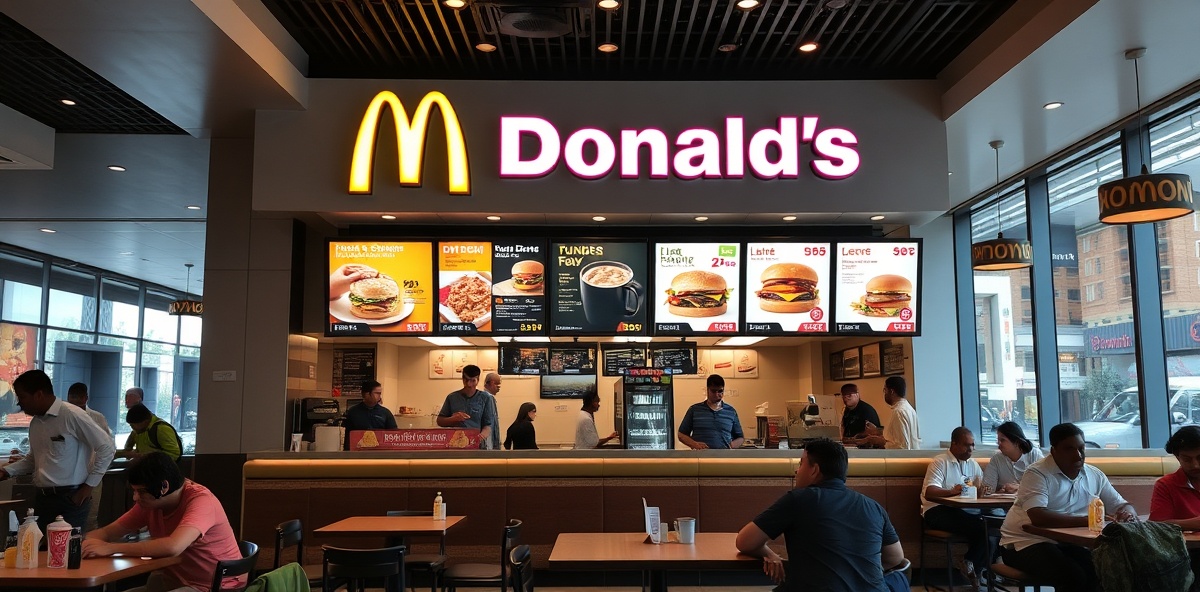Introduction: Global Brand, Local Flavor
When McDonald’s entered India in 1996, it faced a challenge unlike any other global market. The country’s diverse culinary preferences, strong vegetarian culture, and deep-rooted food traditions meant that a direct import of its global menu would simply not work. However, through a carefully crafted franchise model, deep market research, and a relentless commitment to localization, McDonald’s India managed to transform the world’s favorite fast-food brand into an Indian household name. Today, it stands as a textbook example of how a multinational brand can succeed in a complex and culturally sensitive market.
The Franchise Model: A Strategy Rooted in Partnership
Unlike many of its global markets, McDonald’s operates in India entirely through franchise partnerships. The company initially divided the Indian market between two franchisees: Connaught Plaza Restaurants Pvt. Ltd. (North and East India) and Hardcastle Restaurants Pvt. Ltd. (West and South India). This approach allowed McDonald’s to leverage the expertise, resources, and local understanding of established Indian business groups.
This two-franchise structure ensured regional customization, efficient supply chain management, and strong local governance. Each franchisee was responsible for not only restaurant operations but also the entire ecosystem — from sourcing ingredients to marketing campaigns and community outreach. Over the years, both entities localized the business model to match regional demands while maintaining McDonald’s global standards of quality and service.
Localization at the Core: Redefining the Menu
One of the most remarkable aspects of McDonald’s India’s success is its ability to localize its menu without compromising the brand’s identity. The global menu was almost completely redesigned to suit Indian dietary habits, religious sentiments, and flavor preferences.
- No Beef, No Pork Policy: Understanding India’s cultural sensitivity, McDonald’s India eliminated beef and pork products from its menu. Instead, it introduced a variety of chicken, fish, and vegetarian options.
- Vegetarian Innovations: The McAloo Tikki Burger, inspired by India’s beloved spiced potato patty, became an instant hit. Other favorites like the Paneer Wrap, Masala Grill, and Veg Maharaja Mac catered to the growing vegetarian population.
- Regional Tastes: In South India, McSpicy and rice-based offerings reflected local spice preferences, while in the North, richer and creamier flavors resonated with the audience.
This level of localization demonstrated McDonald’s agility and respect for Indian traditions, making it one of the first international QSR (Quick Service Restaurant) brands to truly “Indianize” its offerings.
Building a Local Supply Chain: The Hidden Strength
Behind the success of McDonald’s India lies a robust and efficient cold-chain and supply network. When the brand first arrived, India lacked the advanced infrastructure required to maintain consistent quality for perishable ingredients. McDonald’s collaborated with local partners to build a farm-to-fork cold supply chain, a pioneering move that revolutionized the Indian food logistics industry.
This initiative not only ensured freshness and quality but also created thousands of jobs and supported hundreds of local farmers and suppliers. Today, over 90% of McDonald’s India’s ingredients are sourced locally — a testament to its long-term investment in the country’s agricultural and industrial ecosystem.
Marketing and Cultural Connection: Speaking the Local Language
McDonald’s marketing campaigns in India have been brilliantly tailored to resonate with Indian family values, festivals, and emotions. From positioning the restaurant as a place for family bonding to launching promotions around Diwali and Holi, McDonald’s has consistently localized its storytelling.
Taglines such as “I’m Lovin’ It” were infused with Indian flavor through regional languages and relatable narratives. Campaigns like “McDonald’s Mein Hai Kuch Baat” (There’s Something About McDonald’s) connected emotionally with Indian consumers, portraying the brand as part of their everyday life rather than a foreign entity.
The brand also embraced digital transformation early, launching mobile apps, delivery platforms, and loyalty programs tailored for India’s tech-savvy millennials. Its collaboration with delivery aggregators like Swiggy and Zomato further boosted accessibility across urban and semi-urban markets.
Sustainability and Social Responsibility
McDonald’s India has gone beyond just business expansion. Its initiatives in sustainability, waste management, and community welfare have positioned it as a socially responsible brand. The company has introduced energy-efficient equipment, paper straws, and recyclable packaging, aligning with India’s growing environmental consciousness.
Furthermore, McDonald’s India supports local employment and training programs, empowering youth through skill development under its “McDonald’s Global Academy.” This commitment to sustainability and inclusivity has strengthened its brand trust and long-term customer loyalty.
Challenges and Resilience
The journey hasn’t been without obstacles. Franchise disputes, regulatory hurdles, and shifting consumer habits have tested McDonald’s India over the years. The exit of Connaught Plaza’s partner and the restructuring of operations in North and East India were significant challenges. However, McDonald’s global leadership took proactive steps to stabilize operations and ensure brand consistency nationwide.
The post-pandemic period also demanded adaptation — with a strong focus on contactless dining, delivery, and digital ordering. McDonald’s India turned these challenges into opportunities by accelerating its “Experience of the Future” (EOTF) restaurant formats, enhancing digital customer engagement, and expanding into tier-2 and tier-3 cities.
The Road Ahead: Expanding the Indian Footprint
With India’s fast-food market expected to grow exponentially, McDonald’s is strategically positioning itself to capture the next wave of growth. Plans to open hundreds of new outlets, including drive-thrus and express formats, are already underway. The focus remains on affordability, convenience, and customization, ensuring the brand stays relevant across India’s evolving consumer demographics.
As competition intensifies with global rivals like Burger King, KFC, and Domino’s, McDonald’s India’s biggest strength remains its local integration — a blend of global expertise and Indian flavor that continues to define its unique success story.
Conclusion: A Case Study in Cultural Adaptation and Franchise Excellence
McDonald’s India is more than just a fast-food success story; it’s a masterclass in cultural adaptation, franchise collaboration, and long-term vision. By embracing local tastes, investing in infrastructure, and respecting Indian values, McDonald’s turned potential barriers into bridges of opportunity.
The brand’s journey proves that global success doesn’t come from imposing identity but from adapting intelligently to local realities. McDonald’s India stands today as a shining example for global franchises looking to conquer new markets — one bite, one culture, and one smile at a time.

